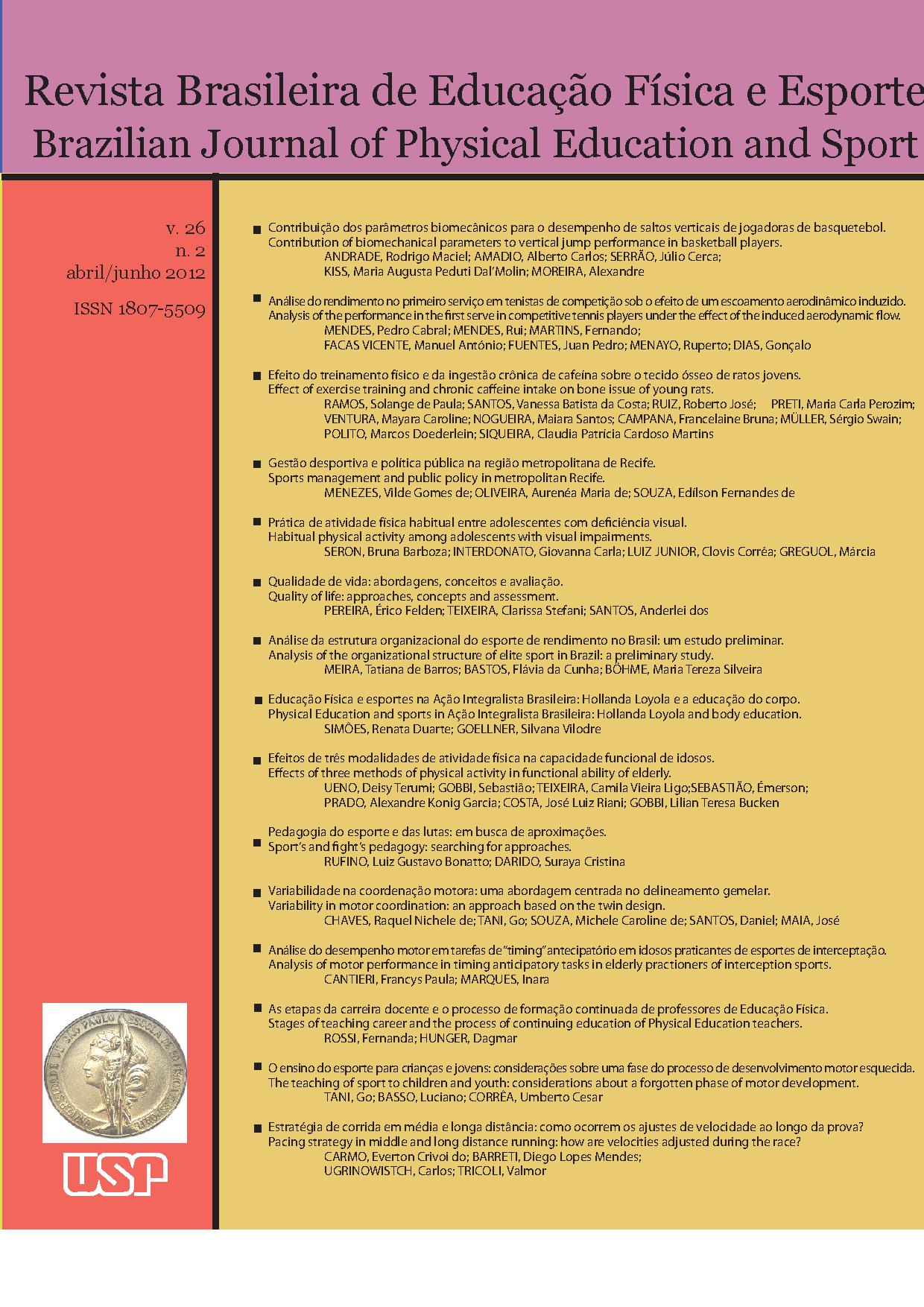Estratégia de corrida em média e longa distância: como ocorrem os ajustes de velocidade ao longo da prova?
DOI:
https://doi.org/10.1590/S1807-55092012000200016Palavras-chave:
Desempenho, Percepção de esforço, Economia de corridaResumo
A estratégia de corrida tem sido apontada como um fator decisivo para o sucesso do atleta. Durante corridas de média e longa duração, a melhor estratégia será aquela capaz de poupar as "reservas fisiológicas", permitindo ao atleta terminar a prova no menor tempo possível. O controle da estratégia de corrida parece ser influenciado por fatores fisiológicos e psicológicos, que são ajustados constantemente durante a corrida, permitindo ao atleta determinar a intensidade do esforço. Diversas variáveis fisiológicas têm sido relacionadas aos ajustes da estratégia de corrida, no entanto, os resultados observados são controversos e foco de grandes discussões. Assim, a presente revisão tem como objetivo propiciar aos profissionais do esporte um melhor entendimento de questões como: 1) quais as melhores estratégias adotadas para determinado tipo de prova?; 2) como os ajustes da estratégia de corrida são realizados?; e 3) quais variáveis fisiológicas influenciam no controle da estratégia de corrida?Downloads
Os dados de download ainda não estão disponíveis.
Downloads
Publicado
2012-06-01
Edição
Seção
Ensaios
Licença
Todo o conteúdo da revista, exceto onde está identificado, está licenciado sob uma Licença Creative Commons (CC-BY)
Como Citar
Carmo, E. C. do, Barreti, D. L. M., Ugrinowitsch, C., & Tricoli, V. (2012). Estratégia de corrida em média e longa distância: como ocorrem os ajustes de velocidade ao longo da prova?. Revista Brasileira De Educação Física E Esporte, 26(2), 351-363. https://doi.org/10.1590/S1807-55092012000200016


